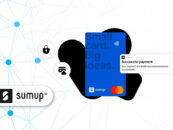Digitization is changing the world at least as much as the industrial revolution did. All areas of life, society and work are affected by the digital change.
Even the financial sector is feeling these changes. The traditional financial structures are increasingly being shaken by digitization. The traditional model where at least one traditional banking institution must serve as a nerve center for cash flows will be overtaken in the foreseeable future.
The majority of people want to be online always and anywhere. Getting on the Internet quickly, easily and at any time has become a matter of course. So it bothers us immensely when this is not possible in certain regions or situations.
The moment is becoming increasingly important for us people: She wants to order the latest jacket now, in this moment. He wants to buy the ticket for a concert, right now, even though he is on the go at the moment.
Just because otherwise it could sell out. Meeting the wishes and needs at the moment of wanting is thus becoming a key driver for which the economy must offer solutions. It does not matter whether the development of technical possibilities has promoted this “I want it now” mentality or whether this “I want it now” mentality can finally develop, because technology now offers these possibilities.
The fact is that the moment is getting more and more attention in economic life. This also applies to companies themselves – in the B2B environment. This is resulting in new efficient processes.
Advantages and disadvantages of cashless transactions

via pixabay, payment-systems
Cash is being increasingly displaced. Even though many consumers still like to hold on to it, it is only a matter of time before we are completely cashless. A majority of stationary purchases is already done these days cashless with a card, internationally more than in Germany. You cannot shop online in any other way.
This has many advantages, but it also has two decisive disadvantages for retailers: 1. The money is not available immediately. 2. The control and accounting effort in companies is very high. Although the sale was made in the accounts and the payment was secured, there is always a gap in time between the accounting sale and the actual receipt of money.
This is not about the matter of lost interest that results from the time difference, but rather about the effort that has to be made in accounting in order to allocate the posted sales to the actual payments. If the retailer is also internationally active, many currencies and also several bank accounts at different national and international banking institutions quickly get involved. All of this makes accounting difficult, expensive and confusing.
Of course, there are companies who structure and automate their processes better than others. However, all companies face two problems: First, the time difference between the purchase and actual receipt of money with cashless payment leads to a high control effort in accounting. Secondly, transactions and clearing are difficult due to the high number of interfaces to banks and other systems.
Banking-similar structures in companies
One solution for this is that the companies themselves become banks. Of course not in the literal sense, but rather in the sense that they build their own banking-similar structure in the company for their cash flows. An infrastructure that they can manage themselves, in which they include all parties involved, such as subsidiaries, resellers, suppliers, in a system tailored to the company.
The result would be that such a system would greatly simplify the accounting effort. The actual cash flow takes place at the moment of the purchase transaction. The money is distributed to the participating companies at the moment of the transaction to the corresponding accounts in the system. This eliminates the complex allocation of the individual amounts of money.
The transactions are faster, more transparent and more cost-effective. In this way, companies also save on bank charges that are incurred when transferring from one bank to another.
Economical, transparent, quick and simple
Such a customized system makes the company faster and more agile. The reason: The process from the consumer purchase to the final distribution of the transaction amounts to those involved takes place in a continuous digital system with seamless transitions.
The interfaces are thus minimized and limited to one system. The consequences: Cost savings, transparency, speed, simplicity. Digital systems that solve the many tasks that arise at the moment of the transaction, and not in a lengthy chronological sequence, offer companies important advantages in efficiency. Companies will become digital “banks” in this way.
Featured picture via Pixabay






